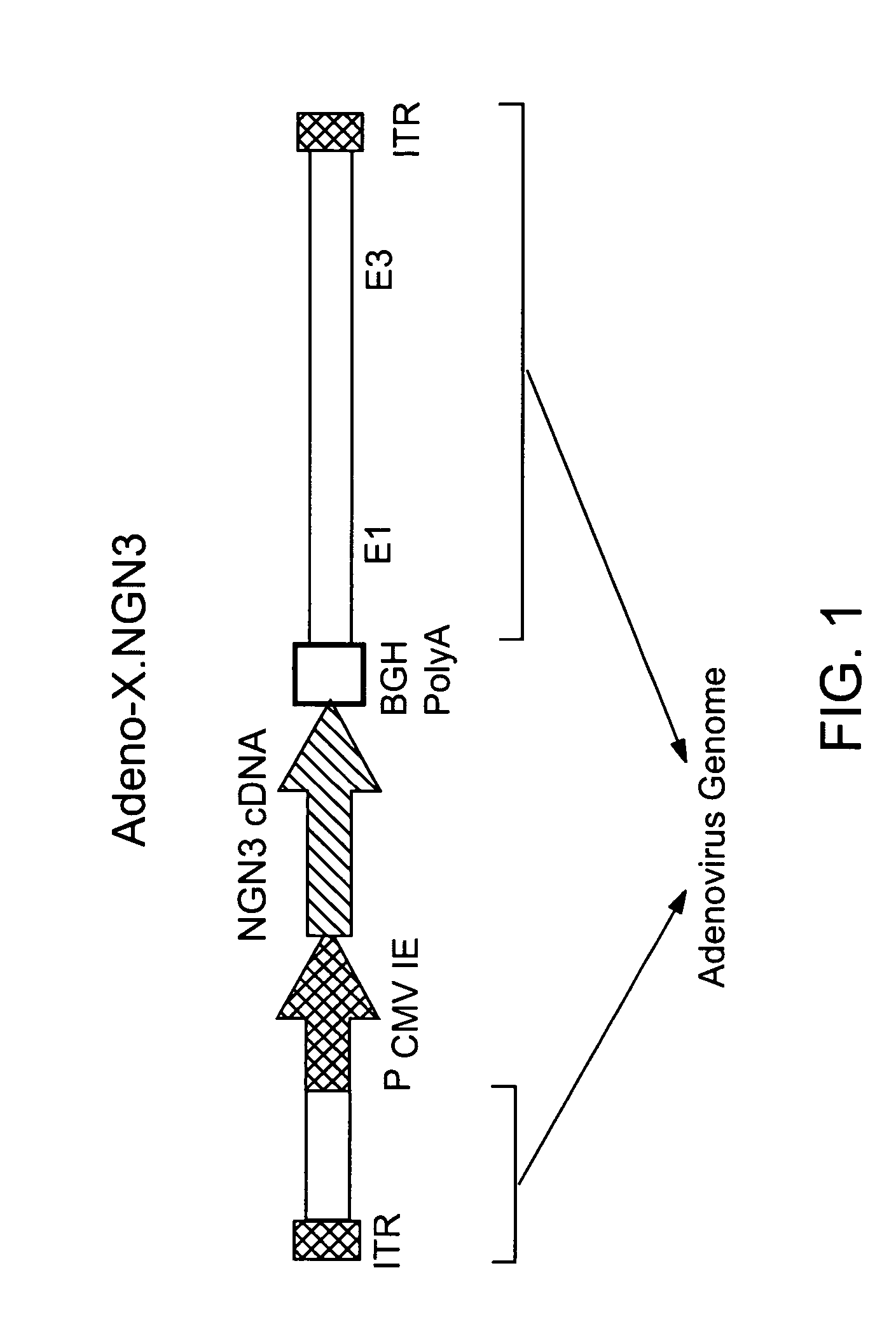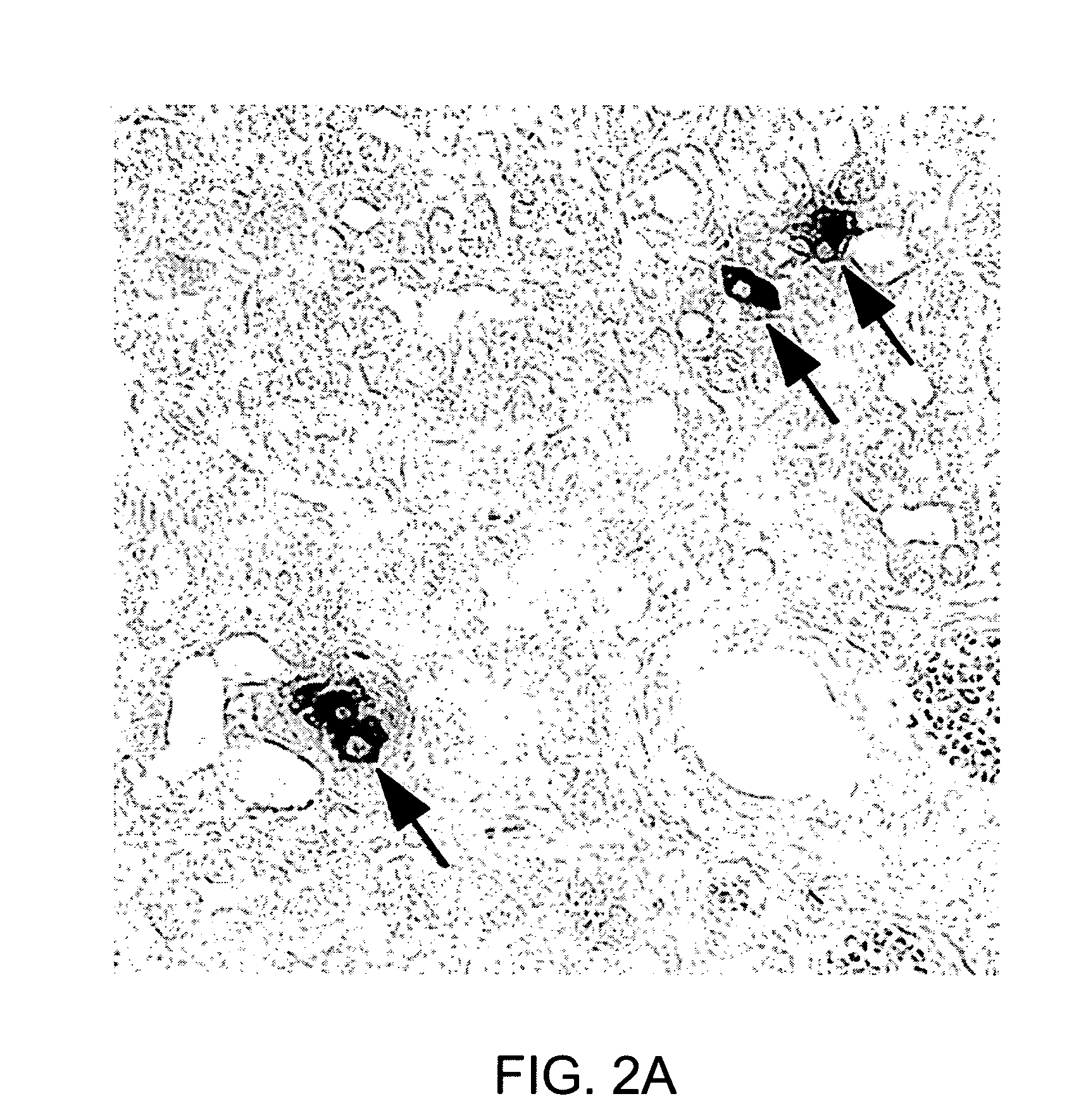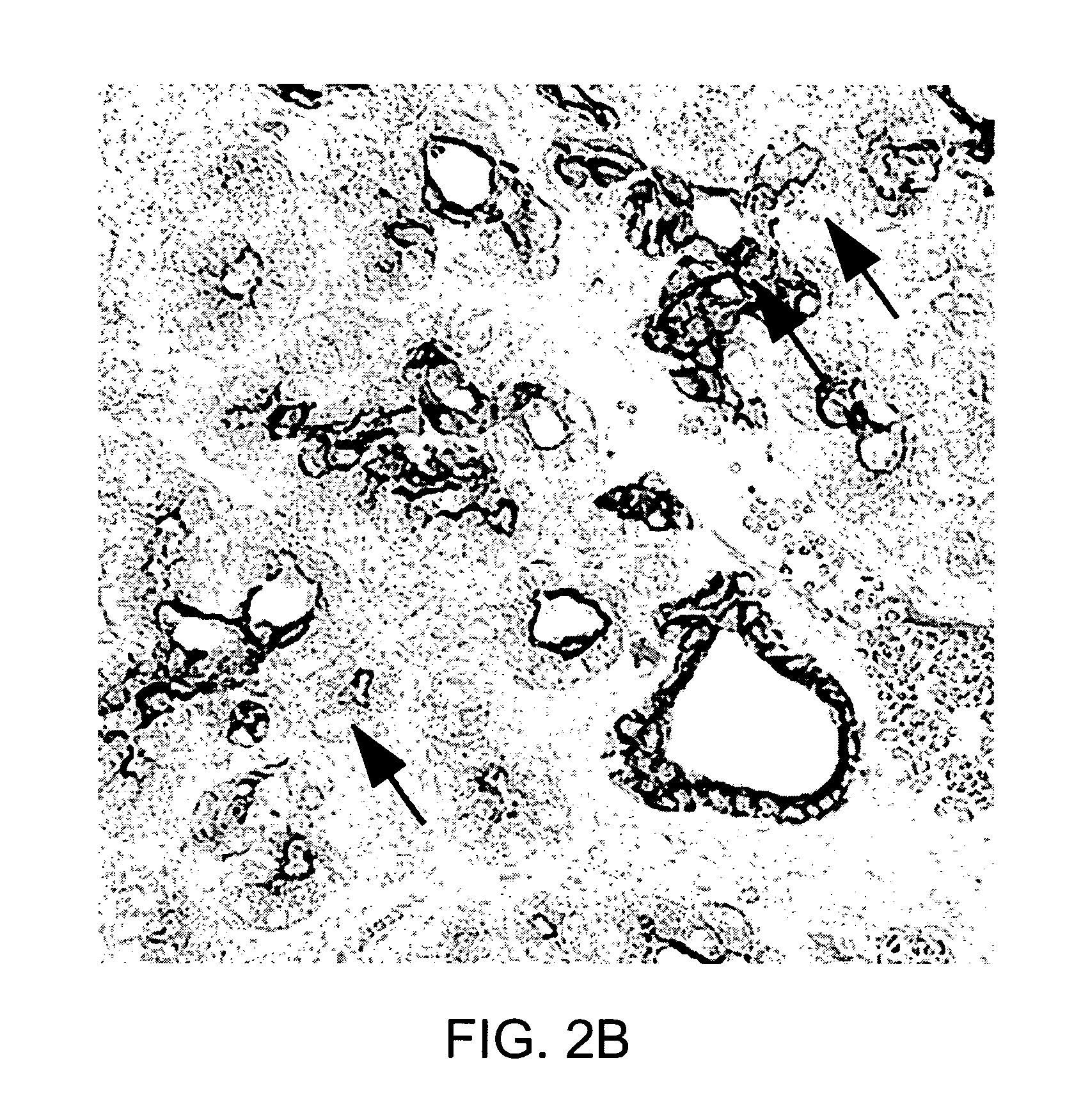Neurogenin 3 promoter
a promoter and neuronal growth factor technology, applied in the field of neuronal growth factor 3, can solve the problems of delayed treatment, increased complications, and premature heart attacks and strokes, and accounts for 15% of u.s. health care costs
- Summary
- Abstract
- Description
- Claims
- Application Information
AI Technical Summary
Benefits of technology
Problems solved by technology
Method used
Image
Examples
example 1
Detection of Ngn3 Expression in Murine Pancreas
[0260] Members of the basic helix-loop-helix (bHLH) family of transcription factors regulate growth and differentiation of numerous cell types. Insulin gene expression is activated by a heterodimeric complex of two bHLH proteins: a ubiquitously expressed (class A) protein and a cell-type-specific (class B) partner, NeuroD1 / BETA2. NeuroD1 / BETA2 is also important for .beta.-cell development. The targeted disruption of the NeuroD1 / BETA2 gene in mice leads to a marked reduction of the .beta.-cell mass at birth due to increased apoptosis of islet cells late in fetal development. There is no apparent defect, however, in .beta.-cell formation or insulin gene expression, despite the postulated importance of this factor in .beta.-cell differentiation.
[0261] Assuming that this modest phenotype reflected the redundant expression of closely related class B bHLH proteins in the endocrine pancreas, the inventors searched for additional members of the...
example 2
Isolation and Sequencing of a Human Ngn3 Polypeptide-Encoding Polynucleotide
[0263] A probe derived from a cloned fragment of the murine Ngn3 gene (Sommer et al., supra) was used to screen a human genomic library. This screen resulted in the isolation of the genomic sequence provided as SEQ ID NO:1 in the sequence listing. Based on mapping of the murine start site using 5' RACE of mouse fetal pancreatic RNA, the transcriptional start site in the human Ngn3-encoding sequence is at nucleotide residue 2643. The coding sequence is between nucleotide residues 3022-3663, with a stop site at 3664-3666. No introns are within the 5' untranslated region (UTR) or the coding sequence of SEQ ID NO:1.
[0264] The promoter of Ngn3 is of interest, particularly given that is it exceptionally well-conserved between mouse, rat, and human. Given the role of Ngn3 in pancreatic and islet cell development, the Ngn3 promoter is likely key to determining the number of islet cells in the mature pancreas. The re...
example 3
Isolation and Sequencing of a Murine Ngn3 Polypeptide-Encoding Polynucleotide and Promoter
[0265] The full-length murine Ngn3 sequence and its 5' flanking sequences, which included the murine Ngn3 promoter, were obtained by sequencing a previously obtained mouse genomic DNA fragment (Sommer, et al., supra). The murine Ngn3 sequence is provided in the Sequence Listing as SEQ ID NO:3, with the encoded polypeptide provided as SEQ ID NO:4. The transcriptional start site was determined using the 5' RACE method and confirmed using RNase protection with RNA from fetal mouse pancreas, and is at nucleotide residue 719; the coding sequence for murine Ngn3 begins at nucleotide residue 1093. The promoter comprises a region approximately 500 bp upstream of the transcription start site.
PUM
| Property | Measurement | Unit |
|---|---|---|
| Fraction | aaaaa | aaaaa |
| Fraction | aaaaa | aaaaa |
| Fraction | aaaaa | aaaaa |
Abstract
Description
Claims
Application Information
 Login to View More
Login to View More - R&D
- Intellectual Property
- Life Sciences
- Materials
- Tech Scout
- Unparalleled Data Quality
- Higher Quality Content
- 60% Fewer Hallucinations
Browse by: Latest US Patents, China's latest patents, Technical Efficacy Thesaurus, Application Domain, Technology Topic, Popular Technical Reports.
© 2025 PatSnap. All rights reserved.Legal|Privacy policy|Modern Slavery Act Transparency Statement|Sitemap|About US| Contact US: help@patsnap.com



